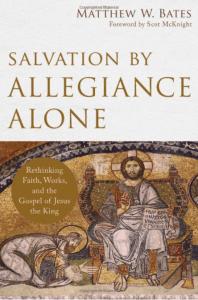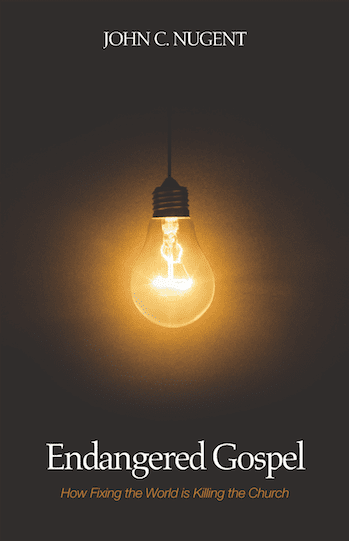I want to make a few points this morning and I solicit your response. The themes for the post come from my new book: The King Jesus Gospel: The Original Good News Revisited, and you can read more about this there.
I want to make a distinction between one thing and another, but I will also assume something discussed in my book, namely that gospel is not the same thing as the “personal plan of salvation.” You can read about that in the book, but for today I want to call your attention to some distinctions we need to make.
First, I want to put four categories in play:
1. The Story of Israel/the Bible.
2. The Story of Jesus
3. The (personal) Plan of Salvation
4. The Method of Persuasion
Second, for most people in the evangelical world, and also beyond, the “gospel” pertains to #3 and to #4. In other words, to “preach the gospel” is to offer salvation to others and to call them to respond so they can get saved, and it is to attempt — sometimes quite well but other times in a manipulative manner — to persuade them to respond. Salvation is often understood through the lens of either reconciliation and/or justification.
What about these distinctions: What do you think? Is the gospel the plan of salvation or a message about Jesus? Of course, it’s not an either/or but where’s the emphasis in the New Testament?
Third, the personal plan of salvation is basically elements in the doctrine of salvation: God loves us, God is holy, we are made in God’s image and objects of his great love, but we are sinners and therefore out of sorts, unreconciled, and at enmity with God; therefore, we are under God’s judgment and destined for hell; but God stepped in to offer us redemption in Christ and our emphasis is on the cross; if we but respond to this offer, we can be reconciled and saved.
Fourth, we have arranged the elements in #3 into a persuasive rhetorical bundle in #4 in order to present the most logical and rhetorically effective manner possible. This method (#4) tends to ramp up the consequences by emphasizing hell and wrath and judgment and the zeal and holiness of God.
Fifth, this re-bundled rhetorical package is what many people think is the gospel. For many people, the gospel is #4.
I contend the gospel is not #4. I contend our method of persuasion is a way of packaging what we believe about salvation. And I contend the personal plan of salvation is also not the same as the gospel itself but instead salvation. Now this: salvation flows out of the Story of Israel and the Story of Jesus. But I also make this contention. If we consider the New Testament’s primary expressions of the gospel, beginning with 1 Corinthians 15, the gospel is the Story of Jesus as the completion/fulfillment of the Story of Israel, and that salvation flows out of Israel’s Story and Jesus’ Story.
If we spend all our time in #3 and #4, we create a salvation culture. If we find our way to #3 through #1 and #2, we can create a gospel culture. I’m very excited about thinking about the possibilities of a gospel culture.















